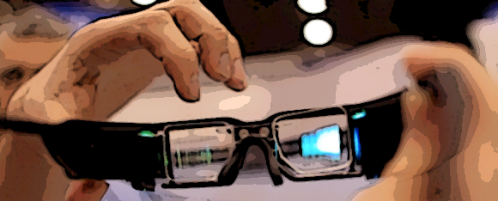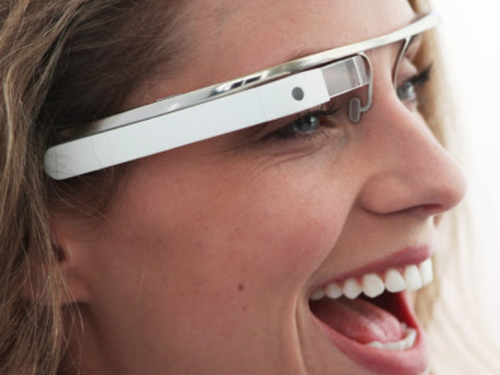
Computer technology has become more and more important in this information society. Indeed we have had the label “Information age” applied to the current time. There is no hard and fast rules applying that technology. So far it has been applied to two mammoth industrial sectors – manufacturing and entertainment. Computer technology had been founded in calculators with the advent of the silicon chip. It used to be that in industrial design circles it was “form follows function”. But computers are an exception to the rule..as they can be miniaturized to such a degree they become seamlessly interwoven with our environment and activities. The technology is for the most part invisible unless you go to the theatre to watch a movie, look at the latest architecture or go pay with your debit or credit card. The form is starting to be dictated by social preference and the “cool” factor. But then one has to define and illustrate what is meant by cool as many countries and regions have their own definition of what cool means. It is a term that has not been properly defined because it has such a broad meaning to so many people. For the young, the nexus generation wants fast and flashy. They use products to show off their good taste and their sensitivity to what they personally consider “good design”. But the functional consideration is to capture useful information quickly and easily that can be applied immediately. This is useful in building, where materials need to go together and the usefulness of the information isn’t in question. For the older set the ability to organize information into useable “soundbites” gives them the power to organize and react more quickly than ever before which is why “JIT” warehousing and logistics is implemented.
Where is the technology now?
Wearables had limited use as of 1998-2000 but their versatility with applicable new technologies is ever expanding the role they might be able to play as know how and Tech advances. Historically wearables have been under-powered, with primitive interface methods meant more for the desktop than they do for something as groundbreaking as a wearable computer. Today there are more options since the improvement of the java computer language and new communication protocols however there is social implications when the technology is obvious such as the harassment of Steve Mann when he wore is eye-tap technology into a McDonald’s in France. He didn’t count on the level of fear people would exhibit upon exposure to obvious technology. People don’t’ want to think their actions are being recorded or monitored. Obvious application of wearables makes people nervous because they are concerned information collected would be used against them.
Why use such a device.
If worn in an explicit manner what is the advantage of that? One would hope people would go “wow, cool”…but more than anything people are afraid of the implications of the technology. The underlying feeling is technology is perceived in a few different ways positive and negative. It can’t be overemphasized that perception is an important component of computer related design. Perception of others can have a direct impaction on how you are perceived when using the technology. If your device captures gestures this will be seen by other people and others might find this disturbing. Wearing something big and bulky and obvious is not seen as a plus when interacting with others. It’s like wearing a yellow vest and carrying a jackhammer to a job interview. It just doesn’t seem appropriate.
The wearable has one distinct advantage over all other forms of computing devices. In fact it has more than one. One is that it captures information in real-time where it can then be processed and applied directly (much like a POP device). Another is the mobility that such wearable technology affords the user. It has a solution to the “chained to a desktop” problem. Even smart phones nowadays are underpowered and don’t collect information about the environment it is in…more so about the user themselves and how they interact with information. Indeed the wearable deals with ephermal information (information that may expire meaning there is time sensitivity built in.

There are eight main reasons why wearable computing is going to quickly evolve.
- Computer processing power is increasing at a phenomenal rate. Citing Moore’s Law computing power at one time was doubling every 18 months. Those numbers are being exceeded greatly now especially with the genesis of quantum computing. Google has created a quantum system capable of doing math so fast it reduces the time to calculate from thousands of years down to mere days. Artificial Intelligence is in its infancy but quickly it is joining the mainstream with implementations like IBM’s Q-Radar.
- Size of circuity is shrinking. This was possible simply because optics and the ability to engineer on the micro level has developing quickly. Bomb sights in world war two allowed this development to occur. Take an electron microscope for instance. With such technology miniaturization becomes not only feasible but desirable as so many benefits come from this. Like power utilization, improved processor speed, improved communication between the separate computer components would be amplified. But of course the technology reaches a wall when it creeps into the quantum level. Why? If we can see at the level of an electron but we are trying to design at the level of a quark naturally there seems to be a disconnect between what we see and what we can do. Also the electromagnetic field around a single electron can interfere with the field of another if they are too close together. This is influencing the design of computers to use multi-core processors rather than trying to create more powerful processors. Distributed architecture is used to improve performance.
- Communication technology today even more so than in the past is becoming standardized and improvements are coming on a regular basis. Communication towers are going up and services are being improved with the implementation of 5G technology. Of course the implementation of the said technology is raising health concerns around the exposure to excessive electromagnetic fields but as knowledge is increased those safety concerns (which are real) can be addressed.
- The internet has become the central conduit for information and commerce. Therefore an ‘Always On’ philosophy for some individuals is necessary in order to manage tasks and information properly.
The notion of delivering product quickly to the customer upon the initiation of a financial transaction is being implemented by Amazon mainly. This requires management be connected to all the information that is possible in order to make routing decisions, increase efficiency and maximize results/sales.
- Wearable computing would support more lateral and interdependent organizations and corporations allowing people to work together more effectively and efficiently. It is like having a group of employees tethered together in a way that makes for more efficient work. Knowledge and processes maybe shared in a way that it has never been shared before. Speed of delivery and efficiency can be increased simply by using the right devices and utilizing the correct procedures.
- The speed of life (work and leisure) is accelerating as time goes by. Technology makes activities more efficient and effective. In order to keep up and be competitive technology needs to be rolled out in tandem with the proper procedures to increase speed of fulfillment.
- By integrating IOT into social fabric we can take advantage of tools that support complex decision making and situational awareness much like is encountered in battlefield situations.
- Technology, if applied correctly can become a seamless integration that supports productive work that doesn’t depend on learned language systems but more so on symbolism. Such a device would support ease of use, intuitive function with a high level of customization possible.
Why a wearable computer?
As mentioned computer hardware/components are shrinking at an alarming rate. Processing power is increasing and communication standards are evolving such that devices that can collect real time information and aid in executive level decision making. That doesn’t mean that people who have technical skills would be exempt from using such technology…in fact that would give them the ability to reference plans, schematics, and implement tasks and processes far more quickly than ever before.
Nicholas Negroponte states, “the answer lies in creating computers to filter, sort, prioritize and manage multimedia on our behalf.” He then goes on to say “computers that can read newspapers, and look at television for us.” What Nicholas was really speaking about was artificial intelligence, not so much about the devices that we use to collect information. We need to define what “work efficiency” means: the interaction of computerized tools must match the efficiency we experience when communicating with another human being. Rather than keyboards and pens we need to use natural speech, recognizable gestures, and facial expressions to communicate and initiate actions and activities within the digital realm. The computer input device should not be a keyboard but rather should be an extension of our own bodies and minds.
Computers have played a role in wartime calculation of projectile trajectories to the breaking of encrypted transmissions by the Germans and the Japanese by use of Alan Turing’s Bletchley park code breaking machine. That role has been continually expanding including the use of Magnetic Resonance imaging to peek into the body in a 3d way. Computing technology isn’t just for mathematical work but can combined with other electronics to derive specific kinds of information. This is where wearable computing fits into the picture.
There are two technologies that wearable devices can implement and both use some form of head mounted display and early version were cumbersome, bulky and impractical. The first is Virtual Reality which allows the user to immerse themselves in a digital reality mimicking our own with visuals that reflect reality with the difference being the ability to manipulate the fundamental rules of physics of light and gravity. This communicates a visual representation of reality that allows the user to spatially interact with elements in an artificially created computer environment. The second is Augmented Reality where digital imagery may be super imposed on the users field of vision creating the impression that the virtual images are real 3d objects in the real world. So the user can actually interact in a more “real” way with the environment he/she is in.
Why don’t we have more electronic devices like this?
In three words: “Invasion of Privacy”. The power of wearable computing comes from its ability to engage in surveillance. Imagine a thousand eyes recording your every move digitally. Just imagine the impact ‘The Rodney King Beating’ had on everyone concerned when that video was shown to the general public. It will become necessary to answer the question: “How do we calm people’s fears about the Pandora’s box of technology could open?”
Emerging Trends
Brands have become very important in positioning products in the marketplace. This is because geographic boundaries have been dissolving with greater trade between countries due to new economic policies influenced by technological progress.
The New Tribe
The Merriam Webster Dictionary defines the word “Tribe” as “a group of persons having a common character, occupation or interest”. This in fact, is how market segment is defined. These market segments or tribes are natural extensions of the information they produce. Information and Entertainment can produce a polarization of ideas which can lead to change and conflict(resistance to change). Conflict creates divisions which leads to identity formation. Identity is the key issue which commands respect, fills a need or identifies a need. This will fuel the future of wearable computing.
